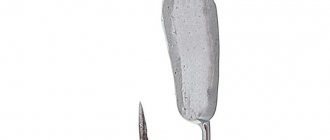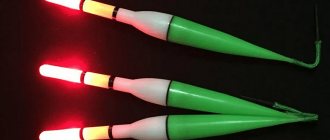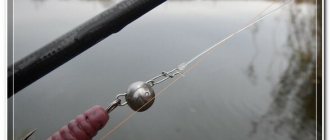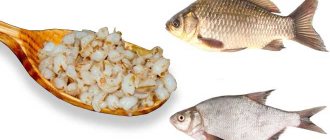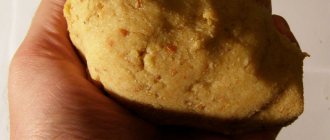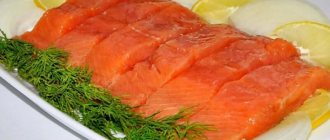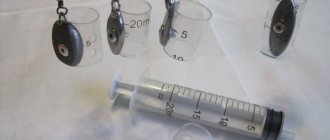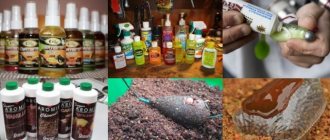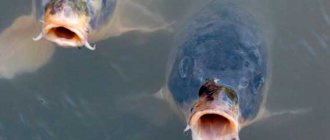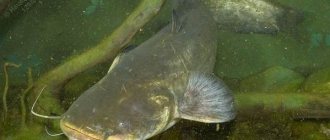Rybalka
Traditional fishing is a popular way of spending leisure time. But without special equipment, the process of fishing becomes difficult. Agree, being away from home without the necessary things is not the most pleasant prospect. When going outdoors, don’t forget to put all the attributes associated with your favorite activity in your backpack.
Fishing gear
Tackle is the most important equipment of a fisherman. Their choice depends on how the fish will be caught:
- standard float rod;
- fly fishing rod;
- professional spinning;
- net or landing net.
Don’t forget to take the necessary equipment for your fishing rod: attachments, reels, hooks, fishing line, spoons, floats, etc. There must be a stand for the fishing rod, as well as a container for storing the catch (a tarpaulin or rubberized bucket).
How to pack a backpack for a one-day fishing trip?
Personal items
If we take public transport to go fishing and then walk for a certain time, then it’s worth choosing the right backpack and deciding on our things. With experience, the fisherman comes to understand that it is better to use small but capacious boxes for fishing small things, you need a little food and a bottle of water or drink.
The backpack must be properly adjusted to suit a person's height. The load should be distributed evenly. If you put all your things in it, put it on your shoulders and feel a heavy load, you are being pulled back, then this is wrong. When you put on the backpack, it should be pressed against your back and your shoulders should not feel much strain. Many models have an adjustable strap that is fixed to the stomach.
We invite you to familiarize yourself with: Fishing for pike perch on girders in winter: tackle, bait, fishing with sprat
If you are going for one day, without an overnight stay, then use a medium-sized backpack with several pockets and compartments. We put the essentials in it. Heavy objects should not be placed on the bottom or on top. It is better to place them in the side pockets. This is, first of all, water, a box with feeders and weights, etc.
Fishing lines and reels with float accessories will fit without any problems. In general, you should fill this container to the maximum. You will always know that the elements of the equipment are concentrated in one place.
This compact leash holder holds many leashes of different lengths.
If you are a spinning fisher, then use plastic boxes with compartments for bait. For one-day fishing, one large or two medium boxes filled with spoons, silicones and other lures is enough.
It is best to store food in a small plastic container tightly closed with a lid. In this form they will not wrinkle and will be well preserved.
It is also important to have a first aid kit with the necessary medications. We place headache tablets, painkillers, a patch, a bandage, cotton wool, iodine or brilliant green in it. We also put waterproof matches in the first aid kit, which can be used to light a fire in rainy weather.
In the summer, the body requires more fluid, but less food. Therefore, it is better to take more water, you can have sandwiches, and a jar of stew, cheese or yogurt.
Be sure to take with you a folding knife with different tools. With its help you can not only cut food, but also open a bottle of water or clean fish. In the summer heat, be sure to take a hat. It's also worth bringing a spare T-shirt and shorts.
Another important accessory for a fisherman is a case or tube for fishing rods. It's better to have several cases. One is small for several fishing rods and a landing net handle, and the second is larger, which can accommodate a folding chair and more fishing rods.
Every angler should have a landing net. There are such conditions that you simply cannot do without a good landing net. It is better to purchase models with a length of 2.5 to 4 meters. The head should have a net made of fishing line. Here is a good option for a telescopic landing net, which when folded has a length of 130 cm.
Regarding the high chair, it is better to use small folding models of this type.
Such chairs are a reasonable compromise between compactness and convenience when fishing.
Groundbait and bait
Suitable baits include earthworms or dung worms, maggots, bloodworms, fly larvae and other insects. They have a minimum shelf life, so they should be collected the day before fishing. When catching large specimens, use leeches and frogs. Some types of fish bite on homemade products - bread, flour, potatoes. Don’t forget about bait - crackers, seeds, ready-made mixtures and liquids with a smell are sold in all specialized stores. Bait and groundbait should be stored in closed metal cans.
Romantic lunch over the holes: what should be included in the diet for winter fishing
Even a few hours of winter fishing means a couple of snacks. We will form a set from what, with minimal volume and weight, will warm and satiate you most quickly. You can, of course, grab a couple of thermoses with the first, second and compote - but it’s hard to carry a full lunch, so we’ll try to make do with little.
Gnaw
Nothing better than “chewable” energy bars has yet been invented. You need to keep a pile of these in the refrigerator so that when you get ready to go fishing, you can grab as many as you need and throw them in your pocket. Eating lard is great. No - 200 - 300 grams of goulash or homemade pate, for example, from duck, will do.
Number two on the gnawing list is nuts and dried fruits. It is a source of quick energy and proteins. Add a bag of these to the bars. If you have it, take a tiny jar of honey.
Gurgle
You should immediately forget about coffee, even with cream, ginger, honey. Coffee and frost absolutely do not go together. Coffee is a diuretic, and in the cold the body loses moisture almost as intensely as in the heat - you should not contribute to dehydration.
Energy drinks are also not useful when fishing: the invigorating effect is short-term, and you will want to drink even more than after coffee. It’s better to forget about alcohol - the effect of false warming after even a hundred grams of cognac can do a disservice. Alcohol is better after fishing than during.
It's better to replace coffee with tea. You can use water, but it’s better if, in addition to “ash-two-o,” vitamins, fats, proteins and carbohydrates are also bubbling in the thermos. Both pu-erh and mate will do; you can brew Kalmyk (aka Mongolian, aka Buryat) tea yourself:
- pour green tea (large leaf) with cold water;
- bring to a boil;
- throw in spices - salt, sugar, pepper, nutmeg;
- pour in milk;
- bring to a boil again;
- pour into a thermos.
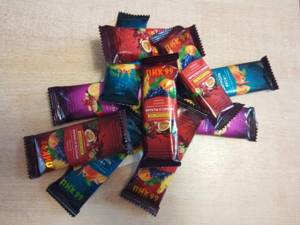
The bar is the cornerstone of a fisherman's snack
To the table of contents >>
Tools
Your backpack should have space for tools that can be used to cut or secure something.
A set of fishing tools includes:
- knife;
- pliers;
- hatchet;
- screwdrivers;
- awl;
- file;
- scissors;
- electrical tape.
To fish from a boat, you need to stock up on parts in case it breaks down, a life jacket, oars, an anchor, a rope and a supply of gasoline. If the process is taking place from the shore, take a foam mat or folding chair - you are unlikely to want to spend the whole day on your feet.
Spinningist
Fluorocarbon line. For two reasons, this type of fishing line is a must-have in your fishing box.
- It is practically invisible in the water and will further lighten your gear in the eyes of a wary predator.
- This is an ideal leader material; be sure to use fluorocarbon as the piece of fishing line to which the bait is attached. The rig will turn out to be moderately rigid, unnoticeable, and breakage when hooked will occur precisely in the places where the leash is attached, so you will not lose the rest of the rig.
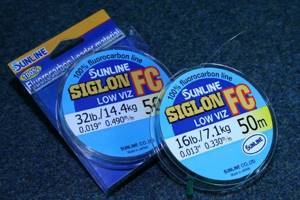
The photo shows a fishing line that, according to our editors, ranks first among all fluorocarbon fishing lines
Offset hooks. To create spinning rigs using silicone or other soft baits, we recommend using offset-type hooks rather than a classic shank. Their structure allows you to hide the sting on the surface of the bait so that it does not stick out. This allows you to avoid snagging the equipment on algae and snags, but still hook fish perfectly.
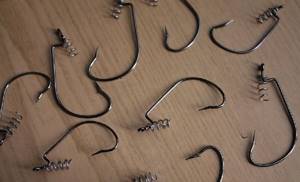
The photo shows offset hooks with additional springs for better fixation of silicone twisters and vibrating tails
Cheburashka sinkers. Another irreplaceable element of spinning equipment is lead Cheburashkas. This is a sinker with two ears on the sides, and most models are structurally made in such a way that these ears can be pulled out. This allows you to connect the Cheburashka with a hook, and therefore with a twister or vibrotail, which replaces the jig head. Such equipment plays more brightly in the water, because its movement is not constrained by a rigidly fixed hook on the sinker.
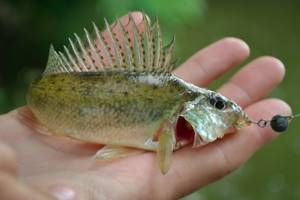
Extractor. This is a device that allows you to easily release the hook from the fish’s mouth. When catching predators, this problem becomes even more acute, especially when catching pike or rotan. But even when catching peaceful fish, such a tool must be in the fisherman’s backpack. The design of extractors differs. Some have only a plastic hook, some have something like a spring. Some extractors are even designed as pliers with very long tweezers, which also makes it easy to pull the hook out of a fish that has swallowed it too far.
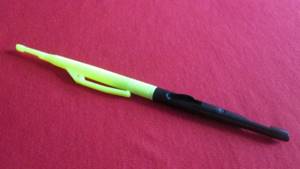
Tourist equipment
Tourist equipment will be needed for those who plan to go fishing for several days. Consider where you will sleep: in a tent, sleeping bag or blanket bag. If you don't have a navigator, take a compass and a map of the area. The backpack should have room for personal hygiene products (soap, towel, toilet paper, toothbrush).
In a waterproof chest bag, put a needle and thread, a flashlight with a spare set of batteries. If you are going to start a fire, you will need paper and matches. In case of rain, you can take an umbrella or raincoat. Be sure to take money, a phone and its charger, as well as a document confirming your identity (passport, driver’s license).
Hygiene products for fishing
It is mandatory to have hygiene products:
- Toilet soap.
- Toothpaste.
- Toothbrush.
- Comb.
- Face towel.
- Foot towel.
- Shaving device.
- Mirror.
- Lotion, cream.
- Toilet paper.
- Sewing kit (thread, needle, scissors).

Clothes and shoes
Fishing equipment should be comfortable and functional. Make sure that it meets the weather conditions - in the summer it allows you to endure the heat and protects you from insects, and in the winter it keeps you warm and protects you from the wind.
The ideal option would be a jumpsuit. Choose models made of light but durable fabric: nylon, neoprene, rubber. Synthetic material with mirror reflectors is especially popular. It doesn't wrinkle, dries quickly and is easy to clean. It is desirable that the colors of the clothes blend in with the environment.
Suitable footwear include waders made from rubber, polyurethane or polyvinyl chloride. They must be solid, not have cracks and not change their shape.
Tent and accessories: a fisherman’s winter house should be warm and cozy
We have detailed information about tents for winter fishing - from it you will learn how to choose a tent that will be comfortable for you alone, spacious even for a large group and warm in the most severe frost. But besides the tent you will need a lot of equipment.
Screw -ons are ice pegs with threads for screwing in. Factory screws made of stainless steel are hollow, with threads and a sharpened crown - they do not need to be driven in with a hammer, scaring away the fish, and they can withstand even strong winds.
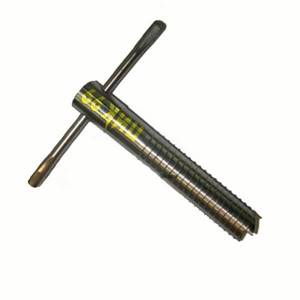
Screw-in - a special peg for ice
Homemade screwdrivers also have their place:
- from nails - once hammered in, they cannot be pulled out;
- made from self-tapping screws - not designed for strong winds;
- made of rod - they rust.
Reflective cords are not required, but desirable: visible even in the light of the moon. Replacing standard tent guy cords with them reduces the risk of tripping over them.
Trekking poles - they make it easier to walk with a load. They weigh a few hundred grams. On ice, it is better to take sticks with sharp tips - they will dig into the ice and hold on tighter.
Ice pick - in times of shortage, replaced the ice auger. There are plenty of the latter, but this is not a reason to give up the ice pick: it can be used for holes and as a trekking pole or alpenstock: to climb the side of a hill, climb over your torso, or feel the ice in front of you.
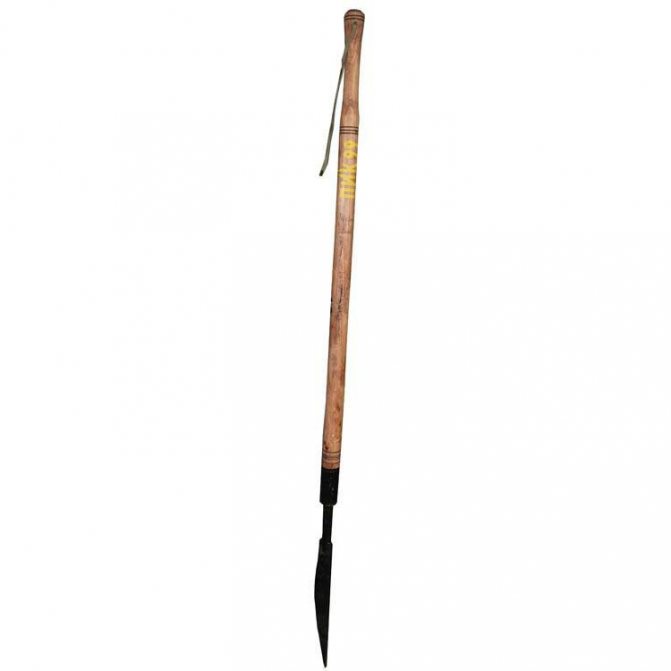
Ice pick. She's an alpenstock. It is also an alternative to an ice auger. Can save you if you fall through the ice
Hot water bottle and burner. Just a heating pad or just a burner is not enough for a warm night on the ice. Therefore, we take both. To warm the body, you will need a catalytic heating pad: it is placed in mittens, shoes, and wrapped in jackets and sweaters to warm them. It runs on gasoline, but no combustion occurs: the fuel is processed in a catalyst - it’s safe.
You cannot warm up a tent with a heating pad, so take a heater with the heating pad. Kovea gas heaters perform well in the cold: they have piezo ignition (you don’t have to bother with matches) and have a convenient cylinder mount.
Lighting devices will be needed both for the tent and on the route. A lamp is suitable for lighting the tent, and a headlamp for the route.
Tent lighting can also be organized using a hand-held or headlamp - there would be something to hang it on. Usually there is a loop or rigid suspension in the tent for this purpose. The power of any good flashlight is enough to illuminate even a large four-person tent.
There are problems with flashlights, even the best ones: not all have focus adjustment, not everyone can “adjust” the angle of light dispersion. And even if it is possible, the width of the light beam may not be enough to uniformly illuminate the entire tent. Therefore, you will have to take two lanterns for winter fishing:
- lamp with pendant for tent;
- headlamp for situations when you leave her.
It is better if the lamp is electric - then you will not have to carry an additional cylinder with you (except for the one needed for the heater or burner).
In a headlamp, one powerful LED and the function of smooth focusing of light are enough: from a thin bright beam that “hits” several tens of meters to a diffuse one. If you want more, choose a flashlight with a red light function: it can clearly see what is around you, and your night vision will not be lost - you will still be able to see well in the dark if the flashlight suddenly turns off. Red light is also convenient for group outings on the ice: it does not blind neighbors.
The lower the temperature, the faster the batteries burn out. This cannot be avoided, even if you take a good, expensive flashlight. The only way to extend the life of batteries is to buy them in a store, not the market. When you grab batteries from a kiosk, you take them after they have been in the cold more than once. Even an inexpensive battery from a store will be better than an expensive one from the nearest market. However, we have found the results of a detailed battery test for you: you can guide your choice. And one more recommendation - always take a spare set and keep it warm: not in your backpack, but in your inside pocket.
The lumens of the flashlight are not too important: the snow already reflects the scattered light of the stars and the moon. Much more important is the quality of the lens, which is responsible for the dispersion of light, and the number of LEDs.
Shabalka is a tool for clearing holes of ice and snow. Another name is a scoop. This is a copy of the Soviet slotted spoon, which is convenient for removing pasta from the pan. Without it, cleaning the holes is inconvenient. And there is no need to try to replace the device with a slotted spoon borrowed from the kitchen: now they are made from a thin metal mesh that will not withstand working with crushed ice.
To the table of contents >>
Additional equipment
In addition to the overalls, the equipment includes:
- a balaclava hat that protects the face from wind and rain;
- Panama hat with a thin mosquito net;
- knee pads, thanks to which you can not get up from your knees for a long time;
- thermal underwear, if we are talking about the cold season;
- gloves that allow you to keep your hands covered;
- a T-shirt with a flashlight built into the visor;
- wool socks that can be worn at any time of the year;
- polarized glasses that allow you to see underwater;
- a vest if you don’t know how to swim and are afraid for your health;
- wading trousers in which you can go into the water.
Tips for Beginners
- If you are going fishing for the first time, then it is very important for you not to forget anything. Prepare a list of necessary things in advance, using the advice of experienced fishermen.
- In winter it is better to take an ice pick with you. For your own safety. It will allow you to measure the ice depth level. Using these indicators, you can independently determine whether it is safe for you to be on the ice.
- Inexperienced fishermen are advised to take a fish finder with them to check the water level.
- Be calm. You can scare away fish with your own noise. This also applies to perfumes and tobacco smoke.
- If the fish doesn’t bite for a long time, then there is no need to wait for it, it’s better to try your hand at a new depth.
Fishing is exactly the hobby that it’s never too late to learn. Try and believe in yourself! To prevent your favorite activity from seeming boring, constantly discover new boundaries for yourself, communicate with like-minded people and participate in thematic tournaments.
Food

A supply of drinking water and food is never superfluous. Take with you food that can be prepared quickly: crackers, canned food, lard, sugar, tea bags. Store food in waterproof film, and drink water in a flask or thermos. Use disposable utensils that can then be thrown away. For utensils, you will need a cutting board, a basin, a kettle, and a kettle. Don't forget about the environment: put leftover food in special garbage bags.
To the feeder
Polarized glasses. Like the floater, it is very important for the feeder to monitor the bite indicator visually. Polarized glasses will be very helpful with this, as they can soften the flow of bright light rays into your eyes, and most importantly, eliminate a lot of glare in clear weather. By watching the surface of the water, especially in carp reservoirs, you will be able to notice schools of large fish from time to time. Try to make this your competitive advantage by fishing these places with your feeder gear using a small Method or Spring type feeder.
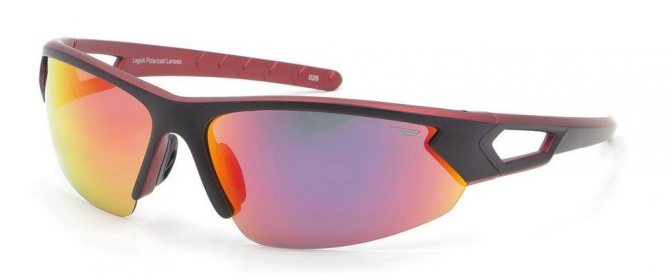
Pre-prepared mixture for bait. Purchased bait alone is often not enough in a pond. In order for the bait mixture to stay in your feeder feeder, it must contain two additional elements: a large fraction and a binder fraction. Cereals and corn can act as a large fraction, and breadcrumbs can act as a binder. If you spend a little time preparing pearl barley, millet, buckwheat and take 200-300 g of breadcrumbs with you, it will not be difficult for you to mix the ideal and very catchy bait. If it’s convenient, you can mix the bait mixture right at home.
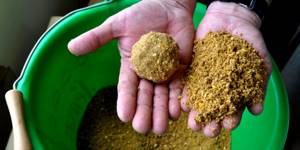
List of equipment for winter fishing from PIK-99
Cloth:
- Thermal underwear - thin (moisture-wicking) and warming;
- Thermal socks - warm and quick-drying;
- Light vests - additional insulation;
- Winter suits and overalls are very, very warm;
- Hats, balaclavas, caps made of weightless soft fleece;
- Waterproof mittens and gloves.
Shoes:
- Gaiters for protection from snow.
Accessories for winter fishing:
- Tents for winter fishing;
- Screwdrivers with welded and sliding handle;
- Scoops (shabalki);
- Warmers for clothes and hands, catalytic;
- Burners - for heating and cooking;
- A gas heater cannot cook food, but it heats more efficiently than a burner;
- Tent lanterns, head and hand-held;
- Reflective streamers;
- Trekking poles;
- Compass;
- Thick foam mats - for both winter and summer.
To the table of contents >>
Stay healthy: first aid kit for winter fishing
The first aid kit is often forgotten. Well, what can happen on ice, right? Here's what you might need:
- To protect the skin from frost - ready-made protective ointments (Atoderm, Apizatron, Kapsin, Morozko children's cream). They replace self-prepared ointments like goose fat with glycerin or duck fat with Vaseline;
- If the protective cream does not help - Panthenol, Actovegin, if frostbite is serious - Iruksol. After applying the cream, cover the affected area of skin with a bandage, just do not wrap it tightly: it is important that blood flows to the damaged areas of the skin;
- For treating cuts and punctures - BF glue;
- To treat a burn - snow or ice in a plastic bag, a bandage (applied loosely so as not to damage the skin).
To the table of contents >>
